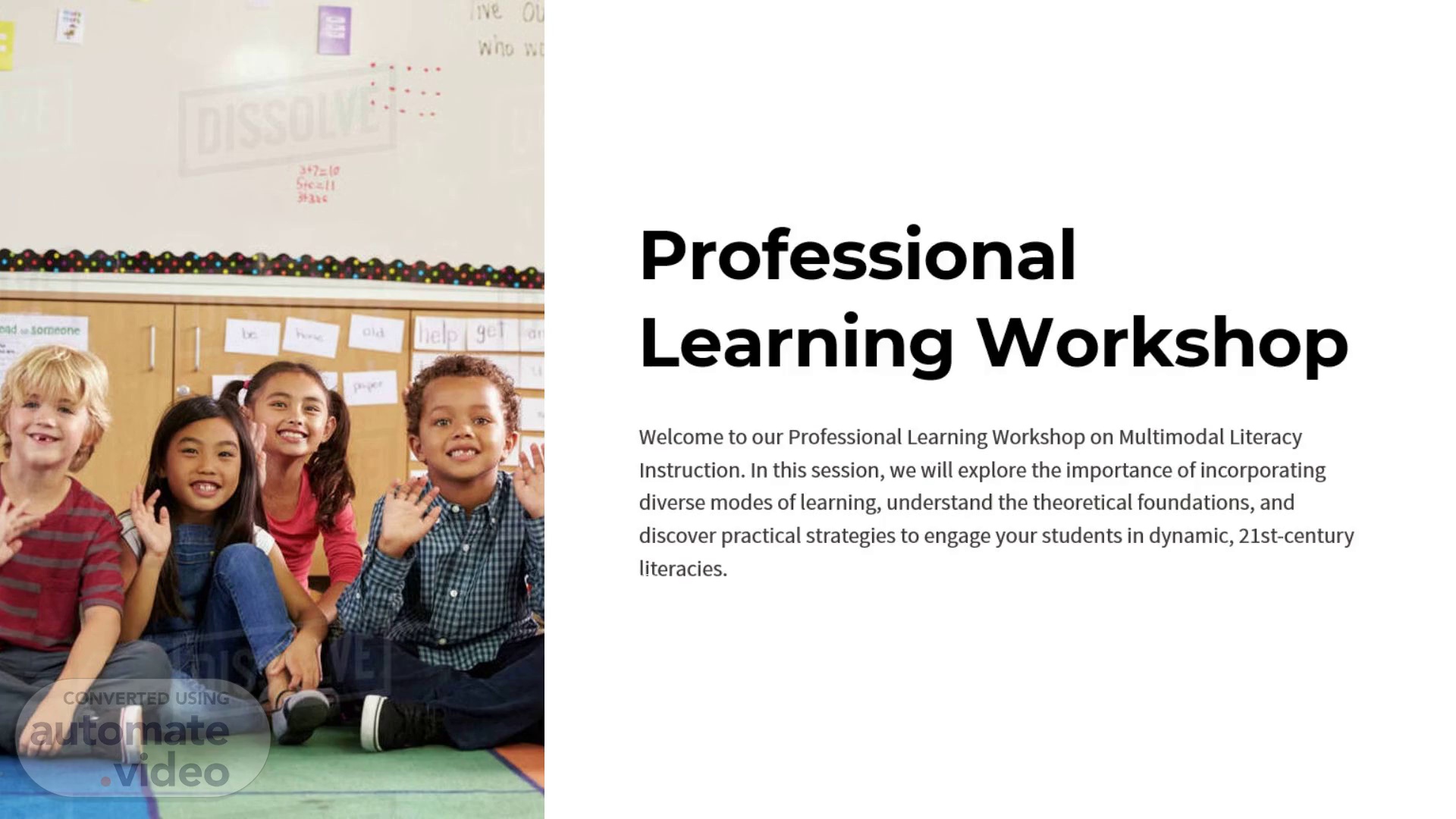
PptxGenJS Presentation
Scene 1 (0s)
[Audio] Professional Learning Workshop Welcome to our Professional Learning Workshop on Multimodal Literacy Instruction. In this session, we will explore the importance of incorporating diverse modes of learning, understand the theoretical foundations, and discover practical strategies to engage your students in dynamic, 21st-century literacies..
Scene 2 (22s)
[Audio] Agenda Importance of Multimodal Literacy Understand why multimodal instruction is crucial for modern classrooms. Multimodal Text Exploration Examine the diverse forms of multimodal text and their unique features Theoretical Frameworks Delve into the key theories that underpin effective multimodal teaching..
Scene 3 (56s)
[Audio] Importance of Multimodal Literacy Instruction Engagement and Motivation Multimodal texts appeal to diverse learning styles, keeping students engaged and motivated. 21st-Century Skills Multimodal literacy develops critical thinking, communication, and digital fluency - essential skills for the modern world. Inclusive Learning Multimodal approaches cater to the diverse needs and backgrounds of all students, promoting equity in the classroom..
Scene 4 (1m 30s)
[Audio] Understanding Multimodal Texts Visual Images, diagrams, infographics, and other visual elements that convey meaning. Auditory Audio recordings, music, and sound effects that enhance the learning experience. Kinesthetic Interactive elements, simulations, and hands-on activities that engage the body..
Scene 5 (1m 51s)
[Audio] Theoretical Frameworks Multiliteracies A framework that recognizes the diversity of communication modes and the need for inclusive teaching practices. Multimodal Discourse Analysis A method for understanding how different modes of communication work together to create meaning..
Scene 6 (2m 13s)
[Audio] Strategies for Teaching with Multimodal Texts Analyze Guide students to critically examine the various modes and their interplay. Create Encourage students to produce their own multimodal compositions. Connect Help students make connections between multimodal texts and their own experiences. Discuss Facilitate meaningful discussions about the deeper meanings conveyed through multimodal elements..
Scene 7 (2m 35s)
[Audio] Differentiation for Diverse Learners Assess Needs Understand the diverse learning profiles and preferences of your students. Adapt Content Select and modify multimodal resources to cater to different learning styles. Flexible Delivery Employ a range of multimodal instructional strategies to reach all learners..
Scene 8 (2m 58s)
[Audio] Multimodal Teaching Resource Infographics Visually engaging data visualizations that combine text, images, and graphics. Digital Stories Multimedia narratives that incorporate audio, video, and interactive elements. Instructional Videos Multimodal content that leverages visual, auditory, and sometimes kinesthetic modes..
Scene 9 (3m 23s)
[Audio] Implementation Strategies Plan Ahead Carefully select and integrate multimodal resources into your lesson plans. Scaffold Learning Provide scaffolding and explicit instruction to support students in accessing and analyzing multimodal texts. Collaborate Work with colleagues to share best practices and develop multimodal teaching resources. Ongoing Reflection Continuously evaluate the effectiveness of your multimodal teaching strategies and make adjustments as needed..
Scene 10 (3m 55s)
[Audio] Evaluation and Reflection 1 Student Feedback Gather feedback from students to understand the impact of your multimodal instruction. 2 Formative Assessment Use ongoing formative assessments to monitor student learning and adjust your approach. 3 Professional Growth Reflect on your own teaching practices and identify areas for continued professional development..